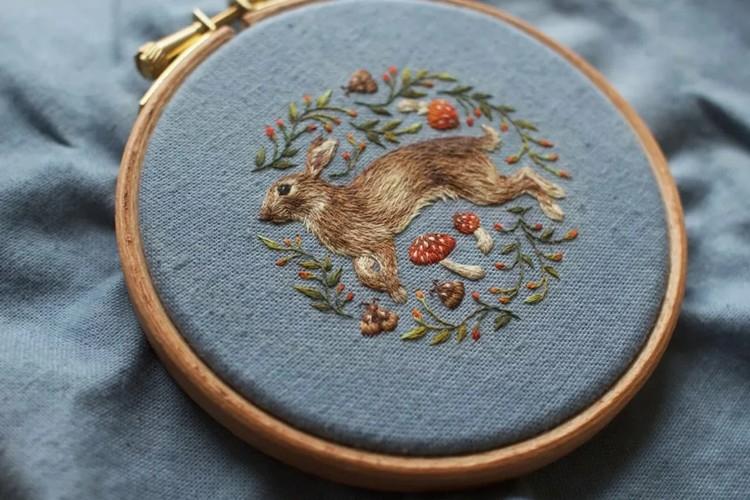
The fashion for embroidery originated in ancient China, when luxurious silk clothes were decorated with golden threads. Since then, its popularity has fallen and then returned again, but it never fades away. After all, embroidery is not only about creating beautiful things, but also a great way to relax, distract yourself or relieve stress. We have collected for you 7 step-by-step satin stitch embroidery workshops for beginners!
Satin stitch embroidery: master classes for beginners
1. Basic straight stitch
Before starting serious work, you need to master the simplest principles. Try to start stitching a small heart straight along the markings to understand how the threads lay and what frequency you need for different densities. To fix the tip, hide it with a needle directly under the embroidery.
2. Methods for embroidering leaves
To make the sheet smooth and neat, there is a special trick that you need to know! Of course, you can just sew to the sides of the middle, but then the center will not be too neat. Or you can immediately visually mark the leaf into a triangle and make cross-to-cross stitches in turn!
The second option is to embroider the leaf as if you were tightening long laces. Alternate stitches in both directions in a checkerboard pattern, and then repeat the same in the opposite direction. This is a very convenient technique if you want to combine two shades and make the leaf colorful.
Looped leaf is another interesting technique that is useful not only for leaves and petals, but also for any small details. Here, immediately sew the leaf across from edge to edge and leave the thread in a loose loop. And then fasten and tighten it with a small stitch in the middle, just along the central vein.
3. Simple stitch flower
Draw a diagram directly on the canvas, or pin it on the back of the hoop. First, sew the contours of all the petals with a "back needle" seam, and then fill them with small stitches from the center to the edges. Let them disperse like a fan, but be sure to follow the direction.
To match the two shades, alternate the long stitches with the short ones, and insert the needle between the stitches of the previous row. Sew the stalk with a stalk stitch and always pull the thread out from one side. Make the leaves a cross to a cross or from the middle - as you like.
4. Embroidery with decking
To make the flooring, general the contour of the part and cut it out of the padding polyester exactly to size. With the first row, baste the flooring around the entire perimeter with wide stitches. The synthetic winterizer holds its shape very well and is easily pierced, so you won't have any problems. Then continue to fill the pattern as usual using a fan principle, alternating short stitches with long ones.
5. Multi-colored monstera
This is a very short but very visual master class on embroidery of a monstera leaf. Here you will see again how to make beautiful color transitions and can try to repeat them yourself. And at the same time - you will find out what else to decorate with embroidery and how to make a beautiful handmade brooch out of it!
6. Patch on clothes
It is very easy to embroider an effective and bright patch for clothes or a bag with a satin stitch. Don't worry if this is your first experience, as slight negligence is in vogue right now. First, be sure to draw the contours on the fabric - and get to work.
To make the patch look bulky, it is better to sew with thin thread and frequent stitches. This is significantly longer, but the result is worth it, although you can practice with regular floss first. To prevent the edges of the patch from fraying when you cut it, leave small allowances and glue it on the back with a glue gun!
7. First bouquet
This workshop is good for practicing and learning how to sew wide stitches. The fact is that small ones are usually neater and color transitions look smoother. But this is completely inappropriate for large works, like a whole wreath or a bouquet.Moreover, in this way, you can also make very beautiful and chaotic transitions.
